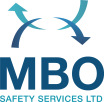There have been 8 fatal accidents in the last four years due to work being carried out on incorrectly supported vehicles or cabs. (that’s an average of 2 a year!)
Lifting plant and equipment can cause accidents if they are used unsafely or poorly maintained. Vehicles falling/rolling off incorrectly positioned jacks or stands, particularly where they are not chocked, are one of the main causes of fatal accidents in Motor Vehicle Repair. Working beneath a vehicle is often required to check for faults, servicing and repairs etc. but because these tasks are so common people get used to working under potentially lethal weights. Unfortunately, serious and fatal accidents happen every year even though the dangers and precautions are well known. You must always use the right equipment for the job. Don’t be tempted to take short cuts or use inappropriate equipment to lift heavy items.
The HSE reminds us:
Never work beneath a vehicle that is only supported on jacks:
- Use axle stands that are in good condition and inspected every year
- Use stands on firm, level ground and securely located under a strong point on the vehicle
- Securely chock wheels remaining on the ground.
- Do not exceed the rated capacity of the stand
Never work beneath a cab or tipping trailer unless it is propped:
- Always prop cabs, trailers etc. that could drop under their own weight
- The prop should be locked in position before gaining access
- If there is no prop fitted, or if one is fitted but you are unsure it will be effective, provide your own
Never crawl beneath a vehicle fitted with air suspension unless it is properly supported:
- Prevent movement of air suspension, either by using suitably rated props or stands to prevent the chassis lowering or by deflating the system
- Don’t tamper with the ride height for the purpose of recovery or repair
You will also need to have your equipment inspected to the Lifting Operations and Lifting Equipment Regulations 1998 (LOLER) to ensure they are fit for use.
- Vehicle lifts should be thoroughly examined periodically by a competent person, who should issue a ’Report of Thorough Examination’. It is recommended that this is done every six months. Although this should identify problems, it is not a replacement for regular in-house checks and maintenance (in the same way that you shouldn’t rely on an MOT to keep your vehicle in good order)
- Other lifting equipment (eg trolley and bottle jacks, engine hoist, vehicle mounted cranes) should be similarly examined every twelve months by a competent person (and Report of Thorough Examination issued)
- Lifting accessories (eg chains and web slings) should be examined every six months by a competent person (and Report of Thorough Examination issued)
- Other equipment which are critical for safely supporting loads such as props (for cabs and trailers) and axle stands should be inspected every 12 months by a competent person
If you have any questions with regards to the safe working practices of lifting equipment or if you need assistance in the Inspections of this equipment please feel free to get in contact.

